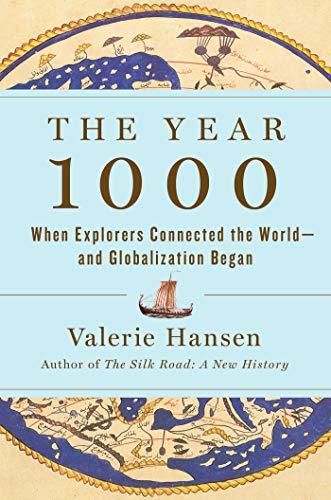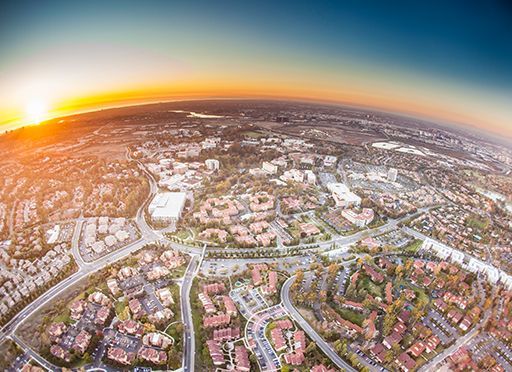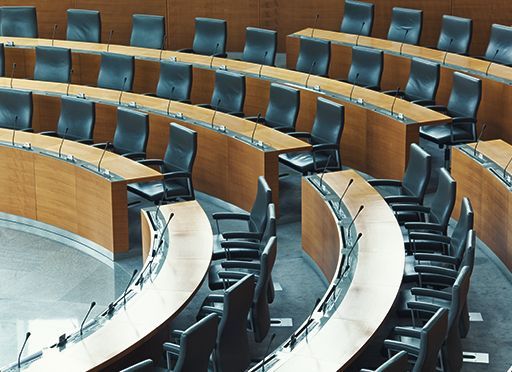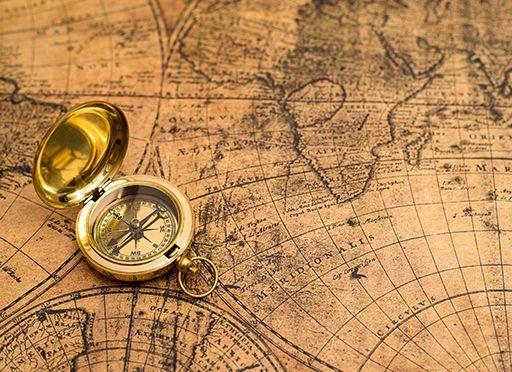Award-winning historian Valerie Hansen dispels any myths about Europeans “discovering” already-thriving lands which, in fact, were participating in globalization long before ships sailed from Europe.

A Thriving Little-Known World
Award-winning historian Valerie Hansen – who teaches Chinese and world history at Yale University – offers a well-researched, engaging and original portrait of a fascinating era. She explains that – aside from the Vikings’ ranging – Europeans mostly exploited established trade routes rather than “discovering” the world. Hansen, who also wrote the compelling The Silk Road: A New History, details how globalization began more than 1,000 years ago. She moves with grace from civilization to civilization and from telling granular detail to offering an evocative overview, all in lively, engaging prose. Even for those vested in history of this time, Hansen likely offers many surprises.
Parallel books you may enjoy – though you might want to start with Hansen’s The Silk Road – include Gavin Menzies’s 1421: The Year China Discovered America and Sapiens by Yuval Noah Harris.
China’s Dominance
Hansen explains that, despite the Holy Roman Empire and Byzantium in Constantinople, China dominated the world with a sophisticated society, the most extensive trade routes, and the largest economy and population.
Europeans didn’t invent globalization. They changed and augmented what was already there. If globalization hadn’t already begun, Europeans wouldn’t have been able to penetrate so many regions so quickly.Valerie Hansen
The Far East, India, the Middle East, Europe and Africa traded by land and sea. Europeans exploited these routes, Hansen relates, and expanded them centuries later, but they did not invent globalization.
Vikings
Native Americans – from the Inuit to the Incas – connected indirectly, and Polynesians explored the South Pacific. The Norse, Hansen found, connected Europe and Greenland to the Americas in 1000. The Vikings also completed global trade routes, fomenting globalization.
Because the Viking voyages to Canada in the year 1000 opened up a route from Europe to the Americas, it is fact – not supposition – that a global pathway took shape in that year.Valeria Hansen
Leif Erikson discovered America in 1000 and the Norse built settlements in “Vinland,” possibly modern Nova Scotia, New Brunswick, northeastern Quebec or northeastern Maine. But, Hansen reports, the native Thule chased them out by the early 15th century.
Trading Networks
Among Hansen’s revelation, few are as evocative as her descriptions of Chichén Itzá, a metropolis of 40,000 Mayans on Mexico’s Yucatán Peninsula – the largest city on Earth. She details how murals in its temples depict blonde-haired captives and perhaps Viking ships. Norse explorers – maybe blown off course – found the Yucatán by 1000. Or, Hansen notes, unveiling her theme of the prevalence of slavery, Native Americans might have delivered Norse captives to Mayas.
The year 1000 marked the start of globalization. This is when trade routes took shape all around the world, that allowed goods, technologies, religions and people to leave home and go somewhere new.Valerie Hansen
The Incas, Mexicans and Mayas traded extensively. Tools and objects from Arizona – 2,000 miles north of Chichén Itzá – appear in Mayan site excavations, and Mayan tools appear in Arizona. After 1200, the Aztecs unified Mexico. Hansen returns to more familiar ground when she relates that, three centuries later, the Spanish used Aztec and Mayan roads to conquer Mexico.
Major Religions
Scandinavians visited Spain, Madeira and the Mediterranean, and controlled Sicily for a century. The Rus settled western Russia, which they named. Hansen marvels that instead of annihilating or dispossessing the indigenous people, they intermarried. Merchants from the Rus civilization traded with Europe, Byzantium and the Muslims.
Today, 92% of observant people follow “one of the four religions that gained traction” in 1000 – Roman Christianity, Islam, Judaism and Christian Orthodoxy. Hansen drops another aha! moment when she points out that this period is when people first identified with others who shared their religion across nations and tribes, thus accelerating globalization.
As Byzantium’s power eroded, it appealed to the Holy Roman Empire to defend the city against Islam. This launched a century of the Crusades and, ultimately, Islam’s conquest of Constantinople and Byzantium in 1453.
Muslim Trade and Scholarship
Muslim trade routes extended across East and West Africa in 1000 and the Amber Route ran 4,000 miles from Northern Europe to China. Hansen traces the Muslim world’s progress as the global center of knowledge and science, advancing mathematics, astronomy, as well as literacy and learning for men and women, including many slaves.
Enslavement
Hansen devotes considerable space to slavery, and for good reason: It was a massive, global business in 1000, and it lasted another 1,000 years.
So many slaves came from Eastern Europe that the meaning of the Greek word for ‘Slav’ shifted from its original meaning to take on the broader meaning of ‘slave’.Valerie Hansen
Hansen cites the jaw-dropping figure that Africans sold 12 million slaves to Islamic buyers between 800 and 1800 – rivaling the 12.5 million enslaved people taken to the Americas between the 1600s to 1800s – and millions more enslaved people taken from Eastern Europe and Central Asia.
Mongols
The unstoppable central Asian Mongol Horde appeared by 1000, and China boasted a highly sophisticated society under Mongol rule. By 1279, the Mongol Empire stretched through Central and East Asia into all of China and Eastern Europe. Hansen asserts this is the largest land-based empire in history – before that time or since.
China
Hansen breaks down how China became a dominant, global power. Traders throughout Southeast Asia used its overland and sea routes going back to 350. Around 1280, the spice trade between Africa and China exceeded that between Europe and Africa by a factor of 1,000. China’s trade balance generated taxes that paid for one-fifth of its public works and government projects. The nation’s agricultural abundance allowed farmers to plant cash crops for export, or to switch to mining or fishing. Chinese coins became the currency of Japan and elsewhere. In 1405, China’s Admiral Zheng He led fleets of hundreds of ships to the Middle East and down the east coast of Africa to Madagascar.
Lessons Learned
Hansen underscores that Europeans came to dominate exploration and trade only after 1500. Then, complex societies in North, South and Central America fell to European conquest and disease. Europeans, under British leadership, dominated trade in the 1800s, but they never colonized China.
As today, Hansen shows that global trade in 1000 produced winners and losers, resentments and political pushback. Her presentation of lessons from 1,000 years ago proves well worth remembering, preserving and heeding. Hansen’s profound knowledge and evocative language offers rich, engrossing reading for history fans, exploration buffs, students and even futurists.







